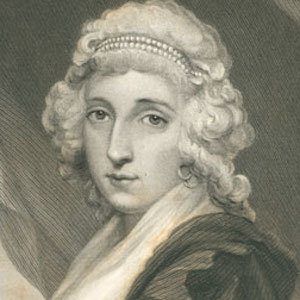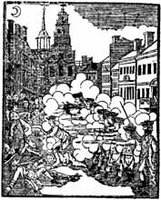The Museum of the American Revolution Hosts a Film Premiere, 9 Oct.
Like the American Revolution Museum at Yorktown, which I wrote about here, the Philadelphia museum combines the historical artifacts of an older, traditional collection with new technology. For the M.O.A.R., the parent institution was the Valley Forge Historical Society.
The museum also inherited the site of a visitor center built for the Bicentennial, close to Independence Hall and other historic sites in old Philadelphia. Like the Yorktown museum, it pays particular attention to the events that happened in the region. It thus offers the best treatment of the Trenton and Princeton maneuvers that I’ve seen as well as some about Brandywine, which didn’t turn out so well for the Continentals.
But the M.O.A.R. aims to tell the full story of the Revolution, starting with the 1763 Treaty of Paris, the political disputes of the late 1760s and early 1770s, and the campaigns all over eastern North America. The exhibit designers took pains to include the perspectives and choices of poor men and women, African-Americans free and enslaved, sailors, and other people not always included in the narrative. It becomes hagiographic, I thought, only in the final exhibit, the unveiling of Gen. George Washington’s campaign tent. And that really is a neat artifact.
One hallmark of the M.O.A.R. are life-size figures recreating dramatic moments, such as Israel Trask’s memory of the snowball fight in Harvard Yard, the tearing down of George III’s statue in New York in July 1776, and a charge by Col. Banastre Tarleton’s horsemen. But there are also plenty of electronic interactive exhibits and genuine artifacts to intrigue all sorts of visitors.
I felt some special jolts of recognition. Some folks in the films and dioramas looked quite like reenactors I’ve had the pleasure of meeting. The introductory film shows the “No Taxation without Representation” phrase printed as I wrote about it here. And the museum has a large portrait of Capt. William Crosbie, the likely owner of the pistols captured at Lexington that I wrote about here.
The M.O.A.R. has a gallery dedicated to explaining the Oneida contribution to the Continental cause. The Oneida Indian Nation was also one of the institution’s major benefactors. That space may feel out of proportion to the influence the Oneida had on the war, but it serves as a metonymy for all the Native American groups on both sides, for whom the War for Independence proved terribly significant.
Tomorrow, in commemoration of Columbus Day/Indigenous Peoples’ Day, the museum will host the first showing of “People of the Standing Stone,” a film about the Oneida nation in American history. Directed by Ric Burns and narrated by Kevin Costner, the 25-minute film explores the Oneida alliance with the Continental Congress and what followed in the early republic—the unjust appropriation of much of the nation’s land.
This weekend, ahead of the movie, Darren Bonaparte of the Mohawk community at Ahkwesáhsne is performing in the museum’s Patriots Gallery. On Monday at 11:00 A.M. and 2:00 P.M. dancers from the Oneida Indian Nation will perform traditional Haudenosaunee social dances there.
The movie will be shown at 6:00, followed by “a panel discussion on how the roles of many of our country’s multiethnic ancestors have often been misrepresented in—or altogether excluded from—the telling of our nation’s history.” The panelists will be:
- Kevin Gover, Director of the National Museum of the American Indian in Washington, D.C.
- Ray Halbritter, Oneida Nation Representative, Nation Enterprises CEO, and a M.O.A.R. Board Member
- Rosalyn J. McPherson, president of The ROZ Group, which managed community relations and oversaw historical content for The President’s House Project in Philadelphia
- R. Scott Stephenson, the M.O.A.R.’s Vice President of Collections, Exhibitions and Programming













